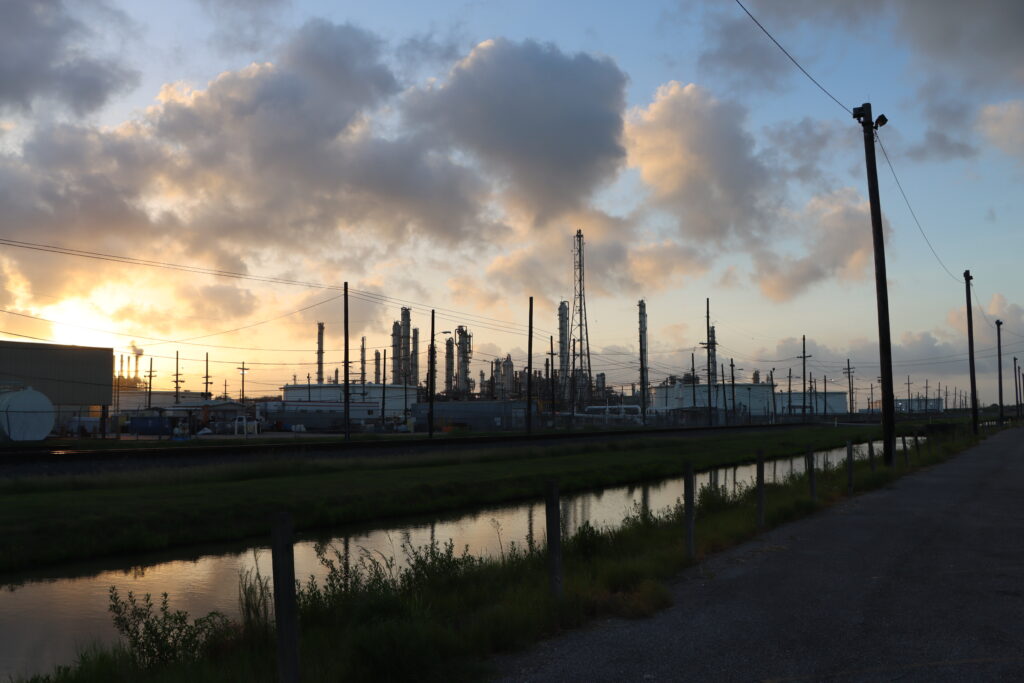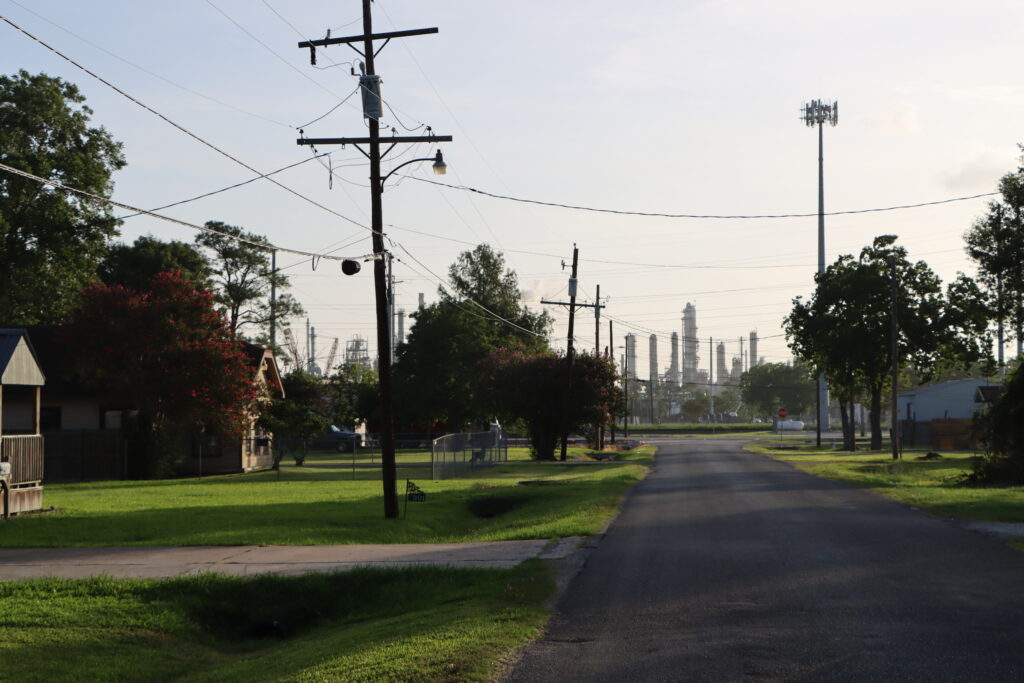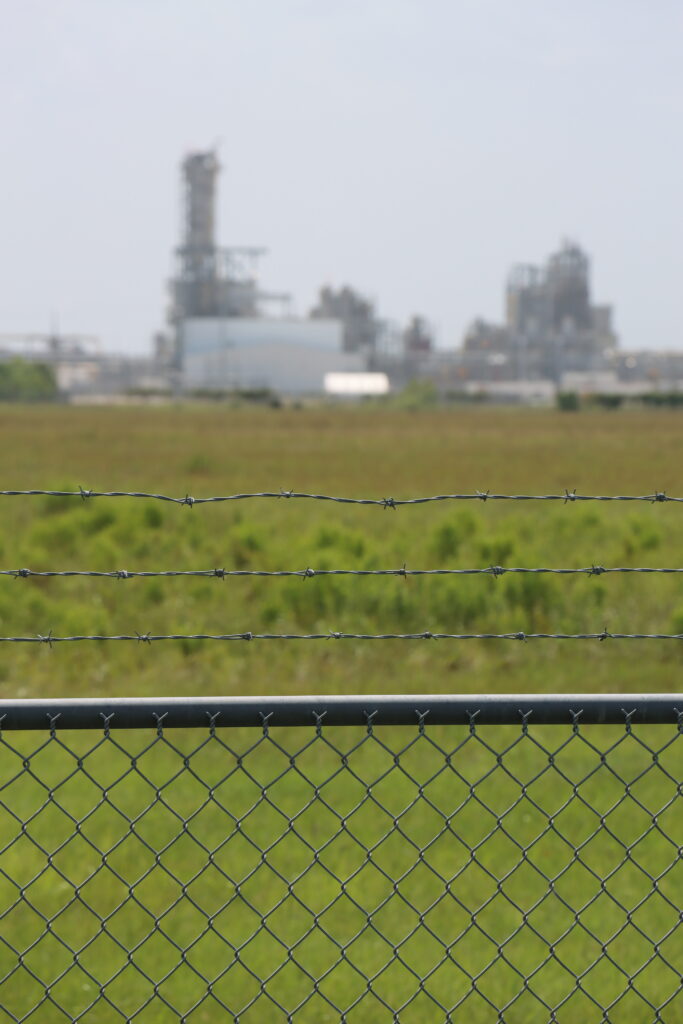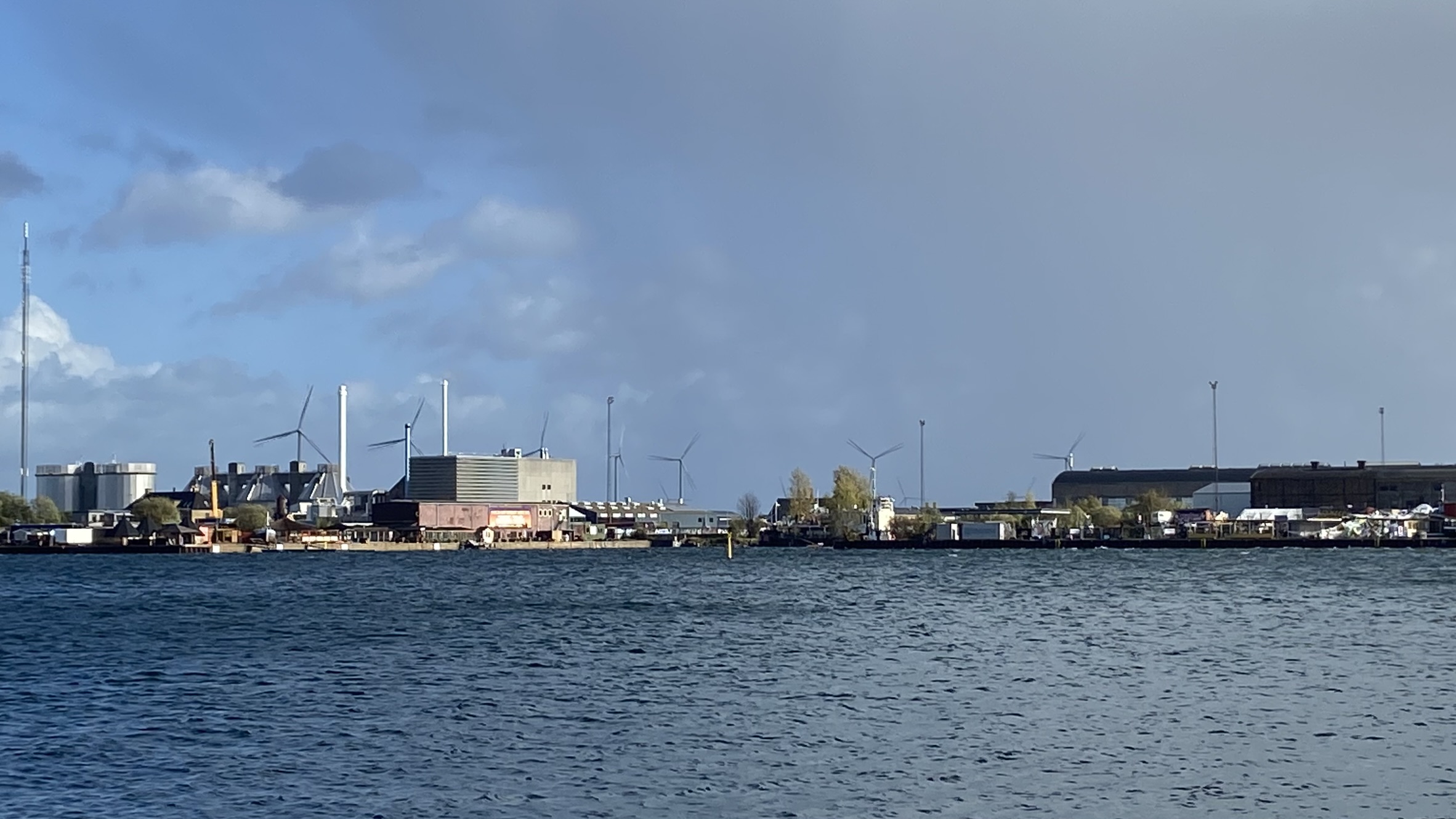To say that Texas’ energy sector is booming might be an understatement. Russia’s attack on Ukraine and the ensuing scramble for new sources of petro fuels in Europe has created an environment in which the U.S’s single largest producer of oil and gas has stood to benefit greatly. From 2021 to 2022, the net price for crude petroleum increased by 71.3%, flinging U.S. production into overdrive. The United States now exports more oil and gas than any other nation on earth, with Texas and its massive fields leading the charge.
Much of Texas’ fossil fuel production rests on fracking, a technology by which a mixture of sand, water and chemicals is injected into drill sites to fracture the sedimentary rock below. Fracking has been particularly vital to the high output of the Permian Basin and the Eagle Ford shale, two large production areas in the west and south of the state. Especially in the Permian, oil and gas wells had reached the apex of their productivity in the early 2000’s, leading to a downturn in production. Through the introduction of fracking and other “non-conventional” drilling techniques, oil and gas deposits that were previously unreachable are now within attainable. The high global demand for fossil fuels has created a bonanza in the fields that is only comparable to the age of its initial discovery.
As oil and gas production has grown precipitously in Texas, so has the state’s petrochemical industry. Aside from petroleum, diesel and a wide array of gasoline types, oil and gas are the primary components in a range of other products, including plastics and rubber. While the environmental and health effects of drilling, fracking and refining are well reported, the effects of this correlated boom in the petrochemical industry is much less widely discussed. However, the effects for local populations as well as the planet at large are oftentimes dire.

The Environmental Integrity Project is a non-profit organization with a close eye on the petrochemical industry, and has published extensively on the subject. Courtney Bernhardt is the organization’s research director and has been particularly focused on the effects of ethylene production, a precursor chemical that is the basis for a staggering array of plastics products, as well as propylene, a highly flammable gas product that is found in many prepackaged foods, on store shelves across the world. Both propylene and ethane are derived from Texas’ abundant natural gas. Ethane is produced in so-called “ethane crackers,” large industrial complexes in which natural gas is heated to create the precursor.
“I think that the current boom is definitely a function of availability of natural gas liquids, and specifically methane that’s coming out of shale formations in the Permian basin in Texas and New Mexico, as well as the Marcellus Shale area of the Ohio River Valley,” Bernhardt said in an interview with the Rosa Luxemburg Stiftung.
Even a cursory visit to the coastal areas of Texas in which fossil fuels are refined and reconfigured shows the scale of this industry. Bernhardt and the Environmental Integrity Project recently published an extensive list of ethane production sites in the coastal region. More than half of the sites surveyed are listed as “high-priority violators” by the Environmental Protection Agency, meaning that their output of net emissions is much higher than the legal limit.
The Environmental Integrity Project tracked the emissions of both existing plants and those in the planning stages carefully, Bernhardt says: “We look at permit documents and locations. They have to apply for a review permit, and those permits apply to new sources of emissions, there are certain requirements based on every plant or project it expects to add.” Courtney’s organization uses these permit applications to calculate the expected emissions output and makes them publicly available through Oil and Gas Watch, an online resource run by EIP. “We tally up the net additional emissions from those plants,” she said.
The effects on communities within the emissions zone of petrochemical plants are drastic. Ethylene oxide is in itself a cancer-causing chemical, which is emitted at high rates by the “crackers” which produce it. Ethane oxide and benzene are two additional toxins emitted in the thousands of pounds per year. “You get kind of a brew of hazardous chemicals coming off of these things,” Courtney Bernhardt says about the plants.
Dr. Ron Sahu is a doctor of mechanical engineering and a qualified environmental professional based in Nevada. He has extensively studied the petrochemical industry, and is often called upon to testify in court proceedings related to its environmental track record. Much of the environmental pollutants that affect the surrounding communities go back to the so-called flares, Dr. Sahu explains in an interview with the Rosa Luxemburg Foundation: “Flares are devices that are used to combust waste gasses in the petrochemical industry, and waste gas means things in the process that have no value, so they have to be disposed of in a safe manner.” While some mechanism for flaring is necessary in nearly every petrochemical facility to allow for the possibility of emergencies in which volatile materials must be disposed of quickly, many plants in Texas also burn off compounds simply because they cannot be harvested profitably. While the traditional chimney-like “stacks” can be tested for pollutants, the same is not the case for the open flames by which material is flared off. “There is no stack, it’s literally just a flame, and the exhaust and the products of the flame literally go directly to the atmosphere. They therefore don’t have a location where you can put an instrument and test it.”
Because of changing weather and atmospheric conditions, as well as differing amounts of material being burned at a given time, analyzing the exact make-up and amount of contaminants coming from a single flare is impossible. However, the type of emissions that are created by the petrochemical industry are well-known, says Dr. Sahu: “There’s a range of pollutants that come out of petrochemical facilities, from the very biggest, carbon dioxide and things like that, which are not local, and are global greenhouse gasses. Then there are the sorts of intermediate pollutants that come from combustion. There’s combustion in flares, there’s combustion in boilers and furnaces that these facilities have, and then you have a range of what we call air toxic pollutants, things for which we don’t have national standards, things like benzene, formaldehyde, butadiene and polycyclic aromatic hydrocarbons, a whole range of things that come from the process, and that also come from combustion.” In addition to the pollutants that are emitted by flares, boilers and furnaces, Dr. Sahu points out that so-called “fugitive” emissions, which escape from piping and storage, are also a major contributor to the environmental impact of the petrochemical industry.
Among the communities affected by the petrochemical industry in Texas, perhaps none is more greatly burdened than Port Arthur. Located along a small inlet across the state line from Louisiana, the city of roughly 55,000 is home to a staggering array of industrial sites. Three refineries crowd along Port Arthur’s shoreline, among them the Motiva Refinery, which is the largest in the United States. Four ethane crackers currently call Port Arthur home, with the construction of a fifth at the site of the Motiva refinery on hold.

Particularly jarring is the fact that the majority of petrochemical plants in Port Arthur are just a stone’s throw from school, churches, and residential areas. Beyond chain link fencing and a small expanse of asphalt, nothing separates the predominantly poor and African-American communities of Port Arthur from the toxic emissions of the industry. During a visit in July of this year, the contrast between the shining smokestacks and high-tech refinery sites and the poorly maintained residential streets that surround them was stark.
John Beard is a former petrochemical worker and Port Arthur city councilman who today leads the Port Arthur Community Action Network (“PACAN,”) an environmental justice group that is pushing back against the industry. In a series of conversations with the Rosa Luxemburg Stiftung, he did not mince words when taking the petrochemical producers to task. In large part, John Beard said, he saw the need to involve himself in the environmental justice movement “because I saw all the disparity between what these companies said they’d do and what was actually happening. When I saw that they were in many ways callous in their regard of looking out for the interests of the city itself, I decided that something had to be done.” Beard ticks off a laundry list of environmental polluters that worsen the air quality, health outcomes and quality of life for the citizens of his city: “You have Valero with over 600 violations in a five year period.” A court case filed by PACAN against the oil company was stopped by Texas’ attorney general, himself under indictment for fraud. “You have Oxbow Calcining, one of the largest polluters in Texas in terms of sulfur dioxide and nitrous oxide, to the tune of over 11,000 pounds of emissions per year.” Beard lists two major emitters of formaldehyde: a Liquefied Natural Gas plant on the other side of the state line, and a wood pellet manufacturing plant that processes wood pulp from local forests into pellets for industrial and home use. PACAN is currently involved in the fight against the construction of an additional LNG terminal, much of whose exports are expected to be shipped to European markets.
In addition to the sulfur dioxide, formaldehyde and nitrous oxide, Port Arthur’s residents are exposed to dangerously high levels of benzene through the Total Refinery, which is the third highest emitter in the entire country, as well as thousands of pounds of ethylene oxide from multiple ethane crackers that sit prominently within the city of limits of his hometown. Tracing a particular individuals’ disease to one specific pollutant is impossible, but John Beard is unequivocal about the effects that this industrial concentration has on residents. “In 2010 we found out that Port Arthur not only has twice the national average of cancer rates, but also of heart, lung and kidney disease.” According to a recently published report by investigative journalists working with ProPublica, the risk of contracting an industrial cancer in Port Arthur is 1 in 53, or 190 times what the Environmental Protection Agency deems an acceptable risk.
For the petrochemical industry, the Texas coast is a nearly perfect location for its plants. Not only are cities like Port Arthur in proximity to the major production areas, but also to the pipelines that bring in oil and gas to be refined. Several major ports offer convenient and affordable means of transportation to ship products to markets in the U.S. and abroad. Another selling point, however, are the lax regulations which govern their emissions.
The Texas Commission on Environmental Quality, commonly referred to by its acronym TCEQ, governs the state’s air, water and waste management standards, and is known for a particularly soft touch in dealing with polluters connected to the oil and gas industry. This attitude begins at the production sites, where well operators are legally permitted to not only burn off, or “flare” unused natural methane gas, but to simply emit it into the atmosphere by a process euphemistically known as “venting.”
Further down the production process, this lax enforcement continues. A facility owned by a Japanese corporation in Deer Park, roughly 17 miles from metropolitan Houston, was repeatedly cited for dangerous levels of benzene, toluene and 1,3 butadiene emitting from their storage tanks. All are carcinogens and have been linked to fatal diseases and cancers such as leukemia. Even though inspections that took place as early as 2002 found the emissions to be far beyond the levels permitted by the EPA and the Occupational Safety and Health Administration, both federal and state agencies failed to act. Despite numerous illegal releases of toxic chemicals, TCEQ permitted the facility to add another 48 storage tanks to its facility in 2005. In 2019, this series of failures led to a massive fire, which burned for 3 days, releasing thousands of pounds of pollutants into the atmosphere and shrouding the surrounding residential communities in noxious smoke.
The state of Texas has also kept attractive to the petrochemical sector by offering enticingly large tax breaks, often coming at the expense of schoolchildren. Under a tax abatement program known as Chapter 313, major petrochemical producers such as Exxon were permitted to lock in property taxes at minimal sums in exchange for intermittent investments into local school districts. This has effectively deprived students outside of those specific districts of the millions of dollars in property taxes that the state uses to fund educational programs. Despite the fact that Texas’ GDP is now only superseded by California’s, its schools remain chronically underfunded and can be found in the bottom third of most national rankings of state systems.
The small suburb of Groves is only a few miles up the coast from Port Arthur, and part of the same petrochemical corridor that stretches east to Beaumont and northward to Houston. Groves is home to the BASF / Total refinery, which also hosts an ethane cracker. Like the Motiva and Valero refinery complexes in nearby Port Arthur, the site of the joint venture lies within a few city blocks of a bucolic residential area. On a humid summer morning, supercharged by a historic heatwave sweeping the southwest, the plant is busy, with streams of workers entering the site through a secured gate into the facility. At least one visible flare is burning off waste through a high flame seen from the road.

A woman in her sixties living only a block away from the chain link fence that separates the plant from the rest of Groves is willing to speak on the issues surrounding the plants, but only under the condition of anonymity. “They’ll set your house on fire around here,” she laughs mirthfully, and says that she would rather not have neighbors know that she was disparaging the industry that is the primary source of income for many in the area. Gesturing towards the bridge that connects the town to neighboring communities in the east, she says that she sees flares from the facility nearly every evening, casting her home in the light of flickering flames. “I never had any health problems before I moved here,” she says. “Now I wake up with my eyes welling up and my throat hurting all the time.” She leads to a bird bath in her backyard, and explains that she finds a thick layer of crud on the surface of the water every morning, likely particulate matter emitted from the nearby flares.
The BASF / Total facility, a joint venture between the German chemical concern and the French fuel producer, has a yearly capacity of 1,000,000 metric tons of ethylene, and is considered a “high priority violator” by the Environmental Protection Agency. Since the year 2000, BASF has paid upwards of $88,000,000 for various environmental offenses at its operations in the U.S. In 2005, BASF was fined close to 2 million dollars for “episodic releases of volatile organic compounds, hydrogen sulfide, nitrogen oxide, sulfur dioxide, and carbon monoxide, and failure to follow proper reporting procedures,” according to the Environmental Resource Center. However, the history of the company reaches back much further in time, into the darkest chapters of German history.
Founded in 1865 in the industrial town of Mannheim, BASF initially specialized in the production of dyes and colors. By the early 1900’s, the company had become a major producer of synthetic fertilizers, allowing it to grow immensely and expand its reach into other realms of chemical production. By the beginning of the First World War, BASF had also become a major supplier of munition components, inventing a process to synthetically produce saltpeter for the German military’s war materiel. During the years of WWI, the company relied heavily on forced labor that it essentially ordered from the German government.
In 1926, BASF became part of IG Farben, a conglomerate of German chemical and pharmaceutical companies. IG Farben would become a major component of the national-socialist war machine, intrinsically tied to both the Nazi economy as well as its arms production. BASF profited directly and early from the Nazi attacks on Germany’s neighbors, beginning with the forced takeover of Polish factories and production sites in 1939. In 1941, IG Farben opened a plant inside Auschwitz, the Nazi’s largest concentration camp, which was the site of at least 1.1 million deaths over the years of its operations. The following year, IG Farben would initiate a process by which it would be able to run its own camp facilities within the perimeter of Auschwitz, profiting from the forced labor of its prisoners. While exact numbers of casualties within IG Farben facilities at Auschwitz are unknown, some estimates place the number as high as 200,000 dead over the years of its operations.
In front of the Groves plant, a security guard at the plant gate is friendly and allows a few pictures, though entry to the plant is out of the question without prior authorization. Multiple attempts to reach BASF about the facility were unsuccessful.
For residents of the affected regions like John Beard and many observers of the Texas’ petrochemical industry, the racial and economic aspects are impossible to ignore. “People who are exposed, who don’t work in the plant but live outside of the fence line, they didn’t sign up for that risk of what they are doing inside of the plant. Therefore, if they are taking on all that risk but not getting any of the pay, why should they suffer?” The median household income in Beard’s hometown Port Arthur is $42,933. A quarter of the population live below the poverty line. While a yearly salary of over $70,000 isn’t unusual for petrochemical workers even without a college degree, most of the money made in these coastal communities doesn’t stay there.
“All you got to do is ride around like I do sometimes and see the license plates from virtually every state in the country,” John Beard said. “And they’re certainly not coming to Port Arthur for tourism or a convention or anything like that, or to enjoy the scenery – they’re coming in to work.” Many of the workers that work in the petrochemical facilities commute to Port Arthur from bedroom communities around Houston or from even further away for short-term employment.
“You hear all this stuff about Port Arthur and jobs, yet Port Arthur people aren’t working,” says John Beard. There’s something wrong with that picture.”
Not only lucrative jobs, but also the tax base that comes with a resident high-income population are missing. “You would think that Port Arthur is awash with money, but it’s not,” says John Beard. Port Arthur’s fading infrastructure and municipal poverty are clearly visible at every corner. “The city has millions of dollars of problems in terms of water and sewage.”
Speaking of the highly compensated CEOs at the top of the petrochemical concerns that operate in Port Arthur, John Beard says, “Those are largely not people of color, yet they do business in communities of color.” To Beard, cities like his are easy targets for corporations looking for the path of least resistance. “They don’t build these things in Beverly Hills, or in River Oaks in Houston,” naming an affluent area of the Texas City. “They build these things in places where poor people are, and where they can barely afford to fight back.”
About the author: Johannes Streeck is a freelance journalist with a focus on the southwestern US.
Photos courtesy of Johannes Streeck.



